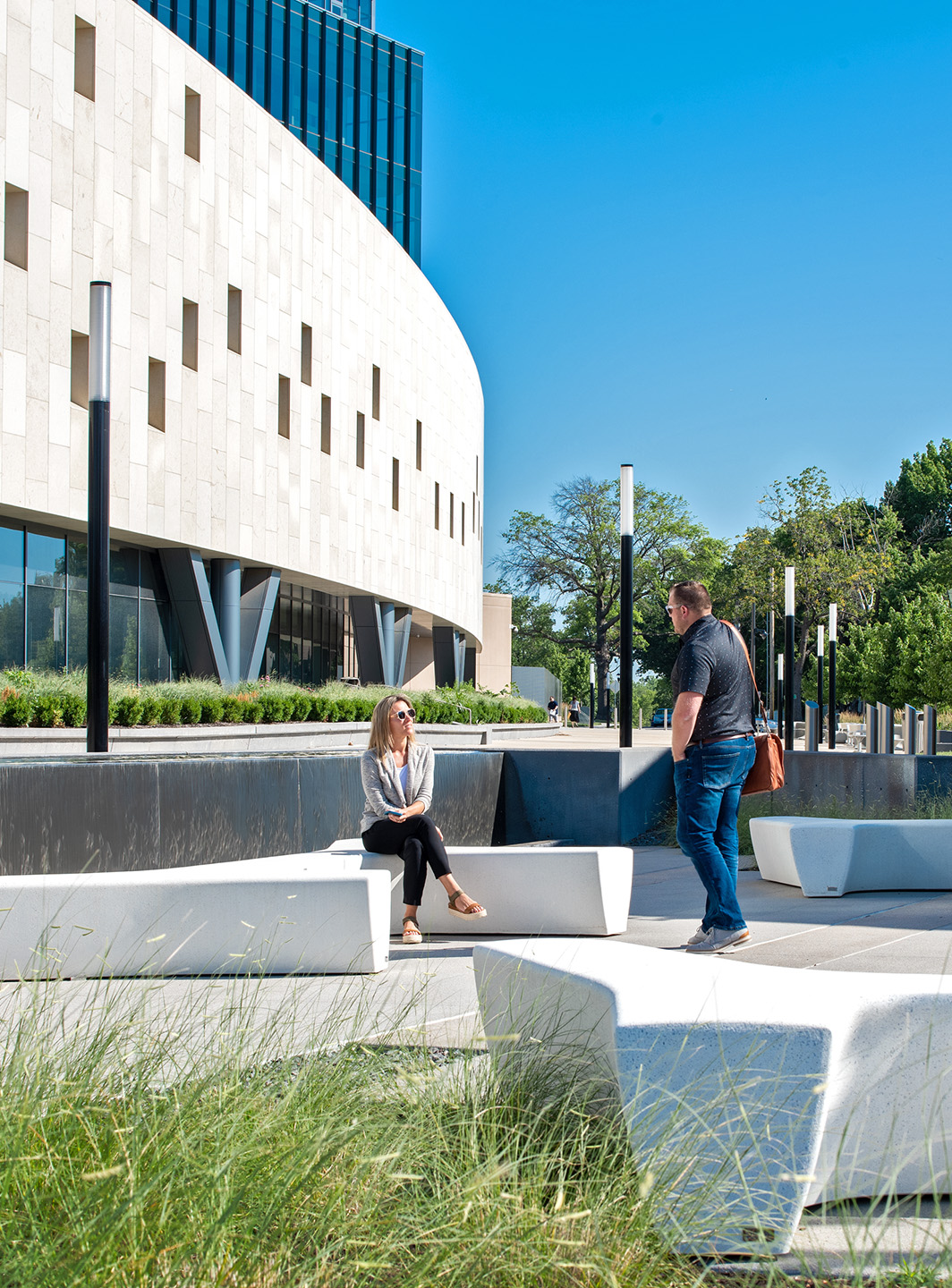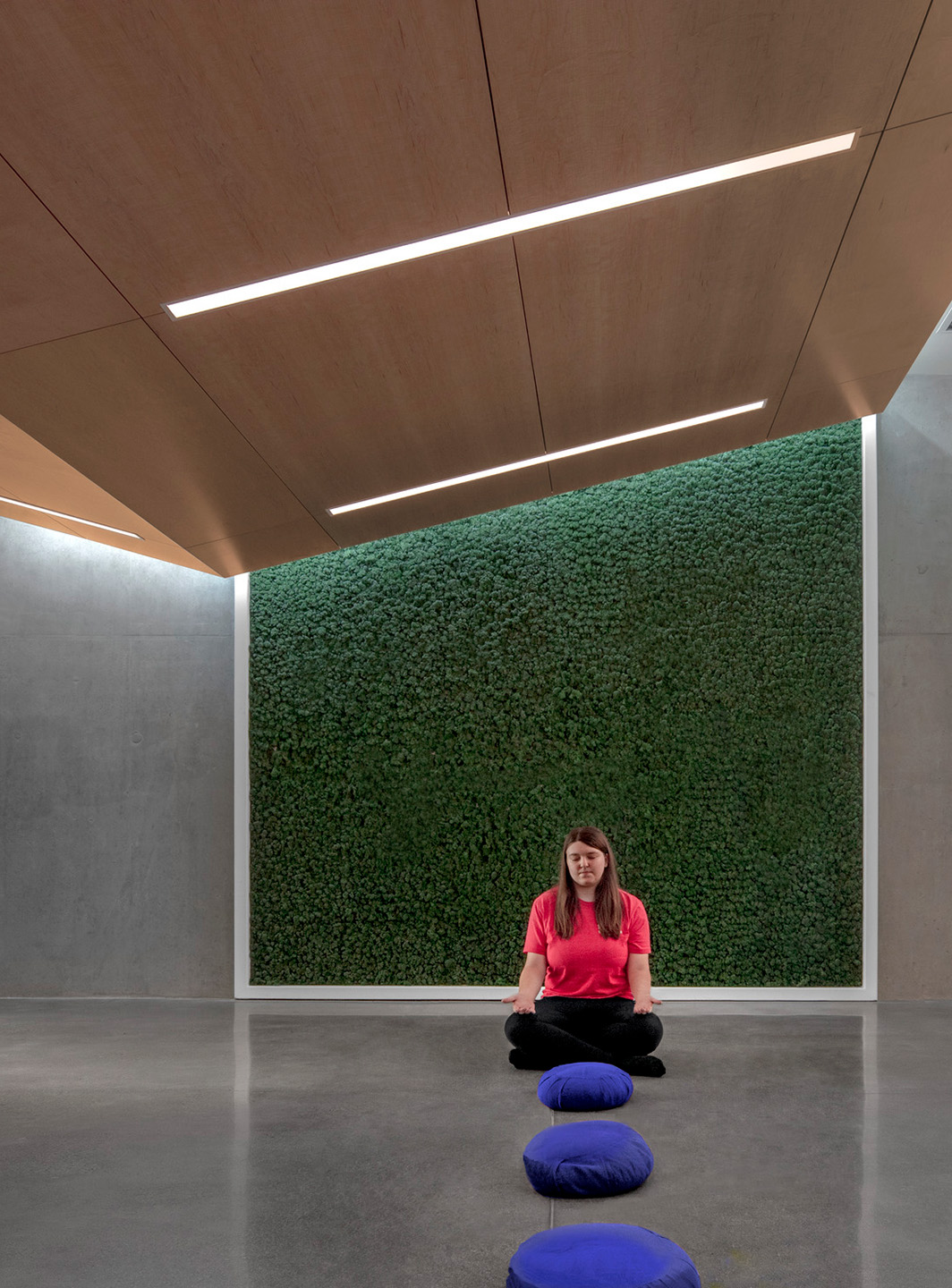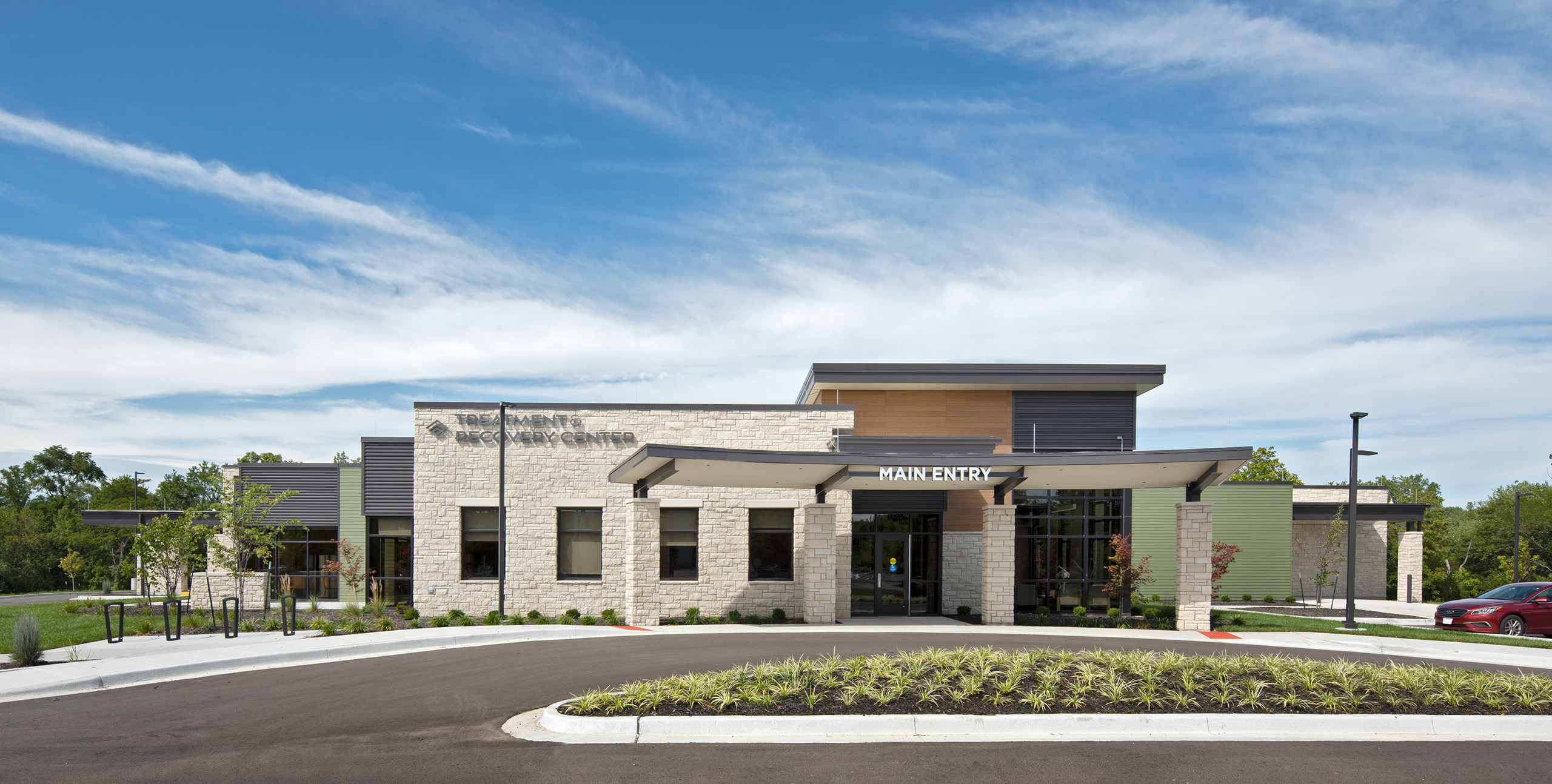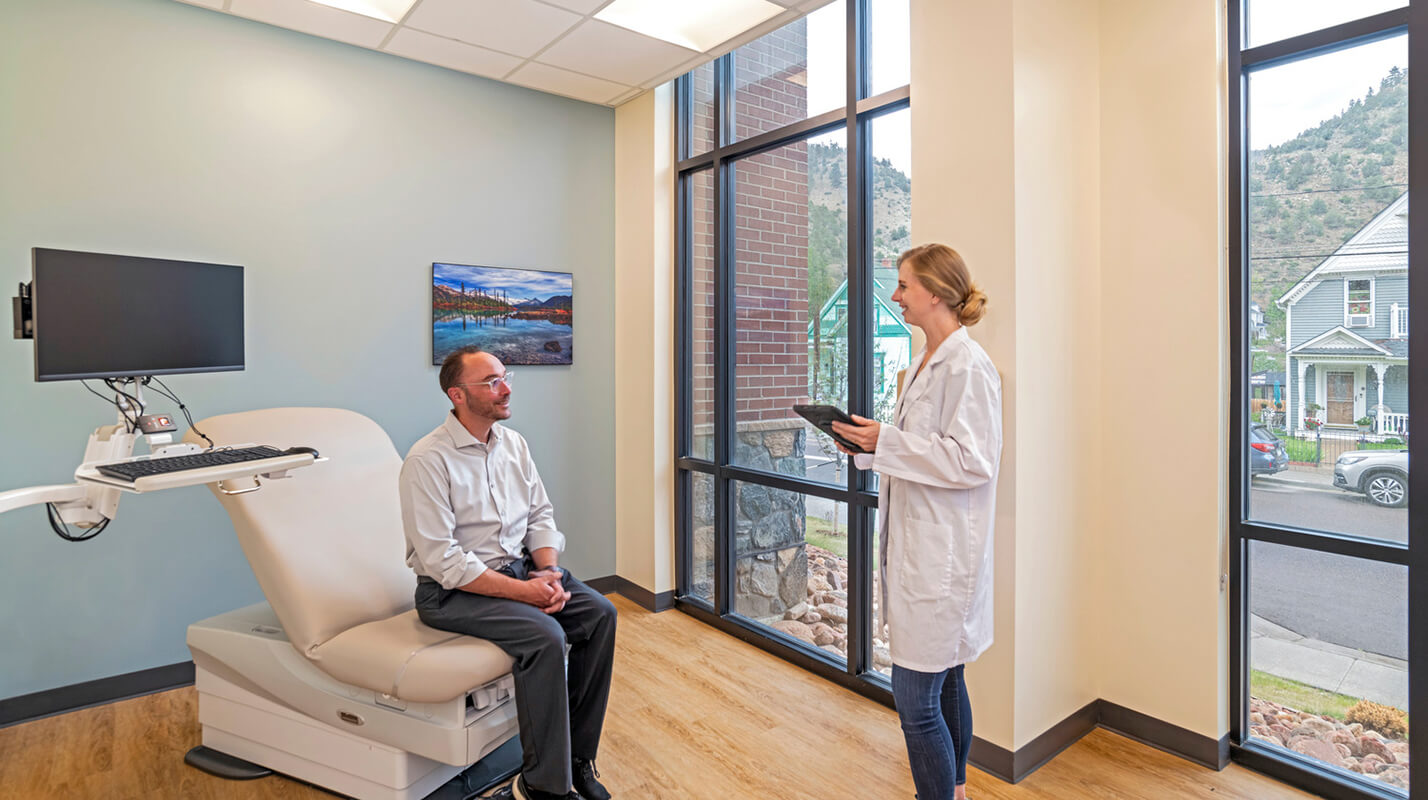Bridging gaps for mental healthcare and addiction disorders
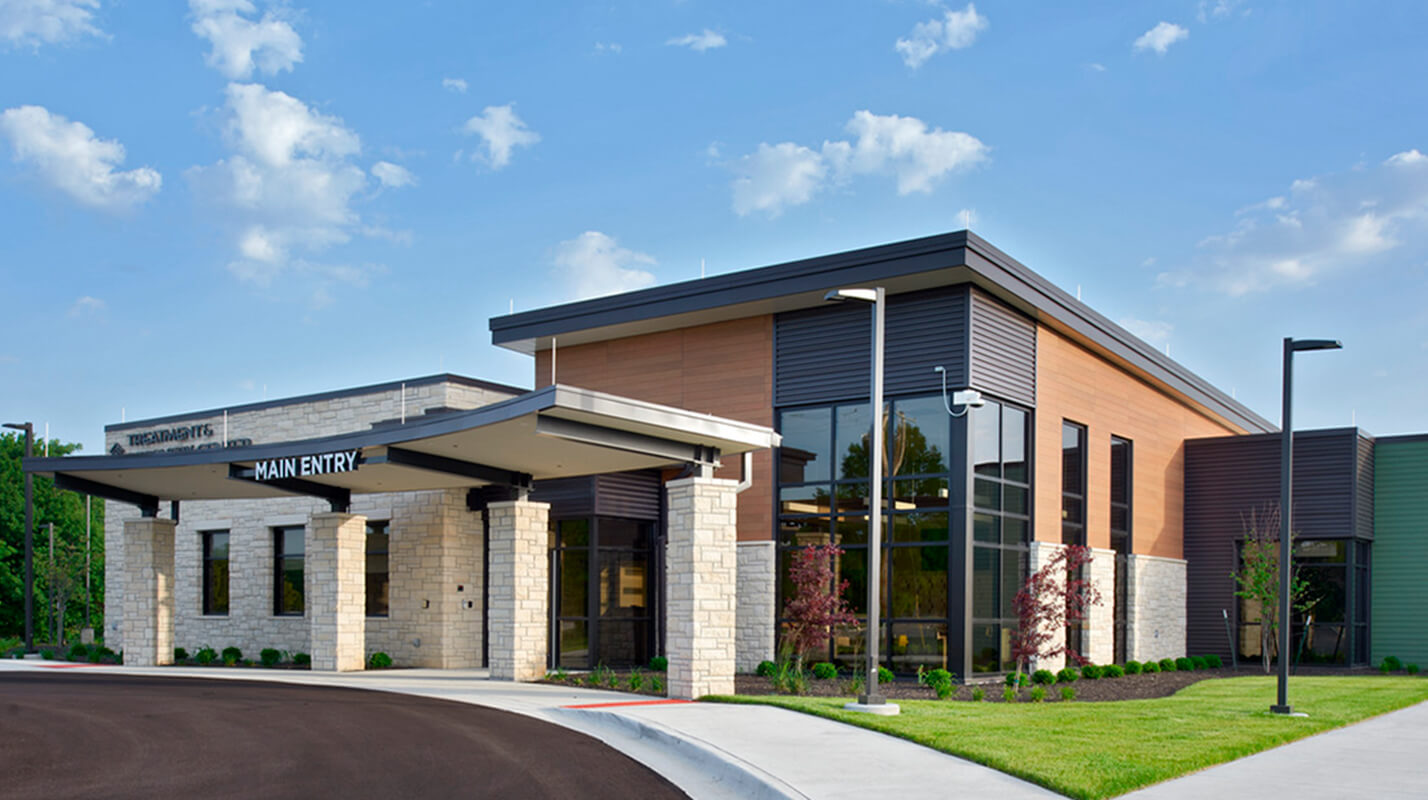
The state of mental health in Douglas County, Kansas
In an era where mental healthcare has become a critical concern in the United States, a new facility in Lawrence, Kansas, is set to redefine how mental health crises and addiction disorders can be addressed within communities. The recently completed facility is the result of extensive collaboration among county officials, hospital staff, facility managers, law enforcement personnel, and community members. It stands as a beacon of hope for improved mental healthcare while also reducing jail populations through effective mental health interventions.
Mental healthcare is a pressing issue in Kansas, where there is a shortage of psychiatric beds, a lack of funding, and a high rate of incarceration for people with mental illnesses. According to the Treatment Advocacy Center, Kansas ranks 47th in the nation for the number of state psychiatric beds per capita, with only 10 beds per 100,000 people. Moreover, the Kansas Department of Corrections (KDOC) Annual Report reports that 39 percent of incarcerated Kansans have some form of mental illness. Many of these inmates end up in jail because they do not have access to adequate treatment and support services in the community.
In Douglas County, the situation is even more alarming. According to the 2018 Health Equity Report by the Lawrence-Douglas County Public Health, Douglas County has the highest rate of suicide deaths in the state, with 18.9 per 100,000 people, compared to the state average of 15.1.
Kansas ranks 47th in the nation for the number of state psychiatric beds per capita, with only 10 beds per 100,000 people. 39 percent of incarcerated Kansans have some form of mental illness.
To address this problem, a group of stakeholders from Douglas County, the medical community, and the law enforcement agencies have collaborated to create the Treatment and Recovery Center of Douglas County (TRC), a crisis treatment and recovery center, where patients can receive assessment, stabilization, and treatment in a voluntary and supportive environment. The facility also serves as a diversion program for people who would otherwise go to jail or the emergency room for their mental health needs.
The TRC is a unique and innovative project and its journey to completion required multiple meetings, brainstorming sessions, public engagement events, and media outreach to find a consensus on the goals and priorities of the facility. Here is how the community overcame project challenges to create a state-of-the-art mental health facility to meet their community’s needs.
Complexities of constructing a mental health facility
The design and construction of a mental health facility is laden with multifaceted challenges. These range from assembling a competent team to handle medical and financial aspects, like Medicare and Medicaid reimbursement requirements, to navigating Kansas’s specific licensing requirements for psychiatric facilities, crisis centers, and hospitals. A significant regulatory hurdle for this project was the state’s limitation on the size and scope of such facilities; for instance, a crisis treatment and recovery center in Kansas is restricted to a maximum of sixteen operational units. This regulatory landscape necessitated creative solutions to provide short-term care effectively.
Project overview
The Treatment and Recovery Center of Douglas County (TRC) is operated by the Bert Nash Community Mental Health Center, Inc., which provides the medical and clinical staff, as well as the communication and coordination with the law enforcement. The facility also partners with other groups, such as the Office of Mental Health, for providing doctors, medications, and maintenance of the building. The TRC serves as the lifeline for immediate access to care and connects people to community resources that put them on the journey to recovery by assessing, treating, and coordinating crisis care for Douglas County, Kansas residents experiencing a psychiatric, substance use, or co-occurring disorder.
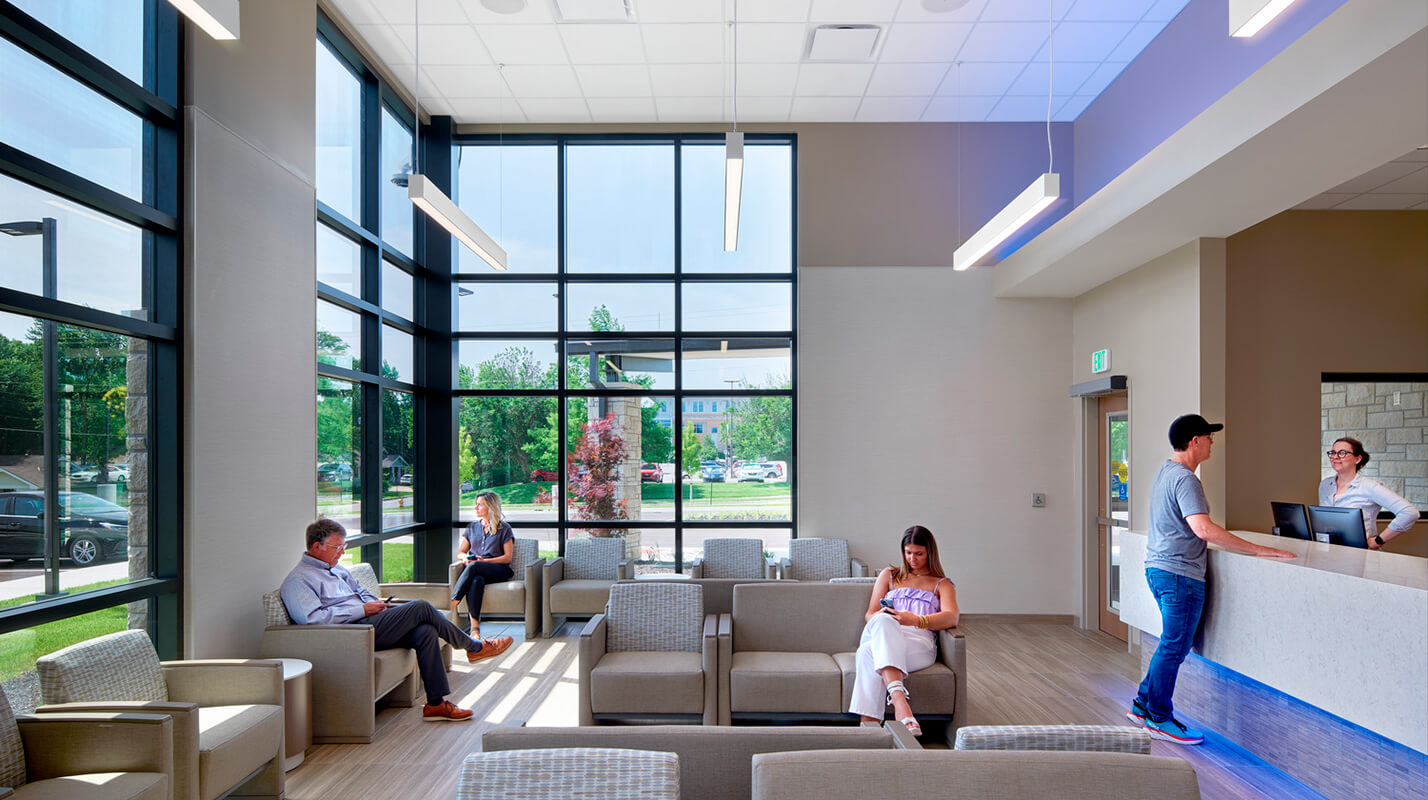
Patient-centric design elements make a difference
With a strong focus on trauma-informed design, incorporation of natural light, use of soothing finishes, thoughtful attention to textures, and well-considered seating arrangements, the design of the TRC aims to reduce anxiety, benefit the well-being of patients and staff, and elevate the overall atmosphere of the space. An emphasis on flexibility in the design allows the TRC to adapt to various services and potential expansion needs. The design features dual entrances: a private one offering round-the-clock access to an intake area and sobering unit for patients, and another leading to a welcoming lobby for visitors. Its architectural elements, like large windows, wooden doors, and natural finishes, foster a comforting, homelike ambiance.
For those struggling with mental health or addiction, the first step to seeking help can be difficult to take. Providing an encouraging, comforting, and normative entrance experience is critical to help the patient feel secure and confident in their choice to self-admit. When accompanied by a family member or friend for admission, this entry design provides ample space for them to take this first step together. Varied spaces cater to both social interaction and solitude, aligning with patient preferences. A signature aspect of the TRC is its landscaped outdoor space, a tranquil, tree-encircled area. Designed for serenity and safety, this space boasts adaptable furnishings, weather-resistant turf, and discreet white netting that preserves unobstructed views. With dual access points, this area enhances patient autonomy. It stands out as a therapeutic retreat, offering the healing benefits of nature and fresh air.
…the first step to seeking help can be difficult to take. Providing an encouraging, comforting, and normative entrance experience is critical to help the patient feel secure and confident in their choice to self-admit.
Designed to enhance staff and caregiver experience
In addition to its patient-focused amenities, the design of the TRC places significant emphasis on staff areas, thoughtfully designed to support the well-being of its workforce. The center includes dedicated staff spaces, including a serene outdoor break area that offers a quiet escape from the demands of their crucial roles.
The building also houses state-of-the-art training and conference rooms, specifically tailored for county officials. These rooms are equipped with modern amenities and technology, facilitating effective training sessions and meetings. The thoughtful layout and design of these staff areas underscore the center’s recognition of the vital role that a supportive and well-equipped environment plays in fostering staff efficiency and morale.
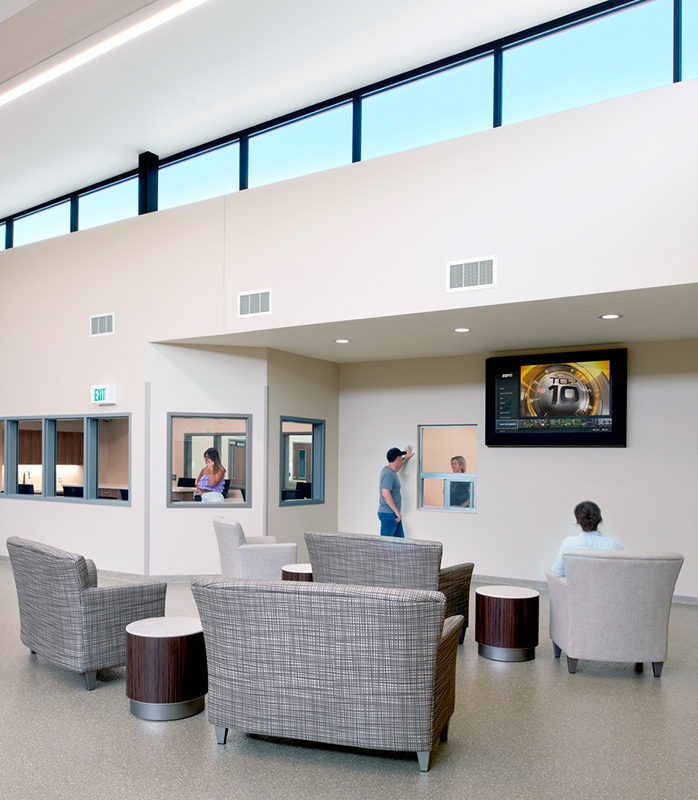
Services offered at the TRC
The Treatment and Recovery Center provides a range of services and programs for patients, depending on their needs and goals. The facility offers three main types of services: urgent care, treatment, and recovery.
Urgent care
The urgent care unit is the first space patients have access to after being admitted to the TRC. It serves all Douglas County residents, children, and adults. At this unit, community members will have immediate access to behavioral health crisis assessment and treatment. This may include crisis observation and stabilization programs. The urgent care unit is open 24/7, 365 days a year, and no appointments are necessary. This is a voluntary program, so patients can leave at any time.
Treatment
Treatment is unique to each person. The TRC offers an observation unit and a stabilization unit for adults 18 and over. The main goal for the observation and stabilization units is to provide a safe, structured place for those individuals experiencing a mental health or substance use crisis to recover. The observation unit is for patients who need short-term care, usually less than 24 hours, whereas the stabilization unit is for patients who need longer-term care, up to 14 days. These treatment units are staffed by mental health professionals, peer support specialists, behavioral health technicians, licensed addiction staff, case managers, and psychiatric professionals. The treatment units provide individualized treatment plans, medication management, group therapy, and discharge planning.
Recovery
The TRC provides individuals the opportunity to receive care coordination, treatment, and support. Once patients leave the TRC, they will have access to community resources and programs that will help create stability going forward. The TRC works with various partners and agencies to connect patients to the services and support they need, such as housing, employment, education, healthcare, and peer support. The TRC also offers recovery coaching, which is a service that helps patients navigate the recovery process and achieve their goals.
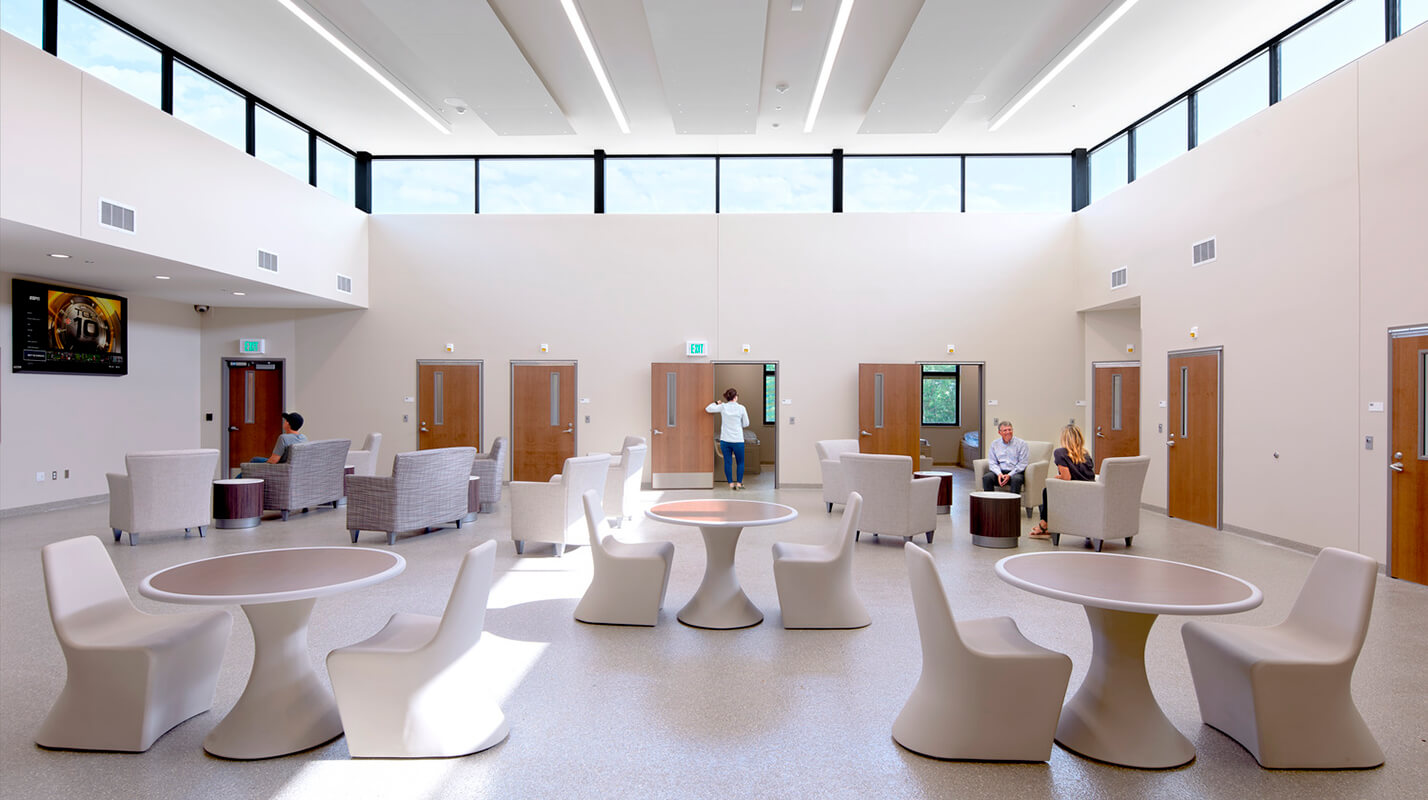
The crucial role of law enforcement
Law enforcement played an indispensable role in the development and operational planning of the facility. The sheriff advocated for a humane alternative to incarceration for individuals with mental health issues. Their expertise in public safety and security influenced the facility’s design and operational strategies, balancing therapeutic care and community safety. Law enforcement works with TRC staff to support a warm hand-off, ensuring patients feel involved and not forced into treatment.
Sheriff and chief of police as stakeholders
The sheriff actively supported the initiative, serving on the board and demonstrating a deep understanding of mental health issues. Recognizing the community’s default practice of bringing individuals to jail, the sheriff aimed for a win-win situation benefiting the community and the jail system.
Law enforcement involvement
Law enforcement underwent training to adapt to this new approach, considering the best care for individuals during arrests and determining appropriate direction. The mindset shift impacted the entire local law enforcement community, requiring a reconsideration of where individuals should go for the most effective care. Operational and facility input from the sheriff included:
Intake Process Perspective: The sheriff provided operational insights regarding the intake process and screening procedures for individuals entering the facility.
Separate intake space
The sheriff also advocated for a distinct intake space to ensure public safety and security, avoiding mixing individuals brought in by law enforcement with those seeking help.
Soft interview space
The sheriff emphasized the need for a welcoming soft interview space, distinguishing it from a typical jail booking area.
Knowledge of security systems
The sheriff played a crucial role in bridging the gap between technical discussions by architects and the understanding of other entities, specifically regarding security systems, cameras, and access control, contributing to facility safety and security.
Ultimately, collaboration and communication among law enforcement, the sheriff, and other stakeholders established a process for determining the appropriate destination for individuals in need. Open communication was crucial for the project’s success.
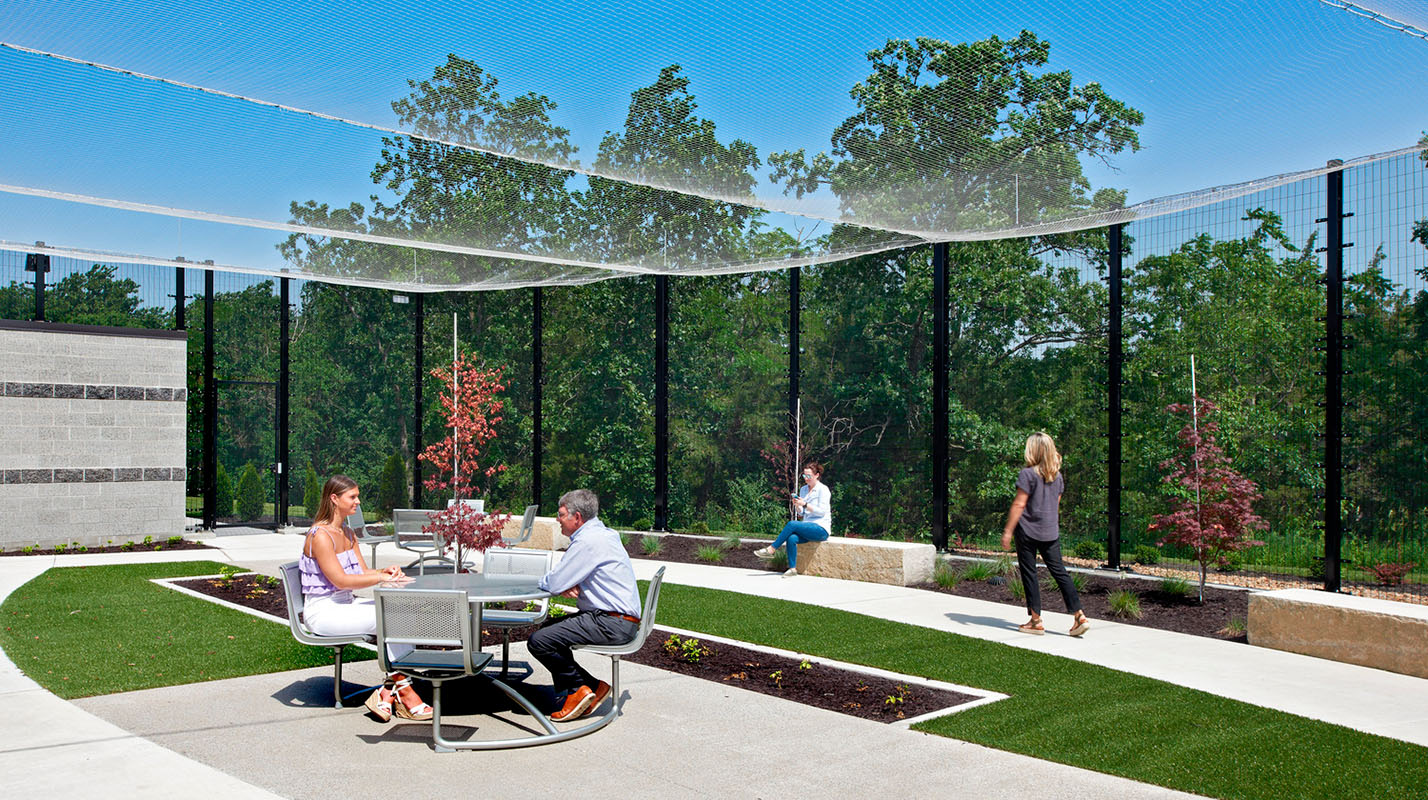
Navigating stakeholder differences through education and community dialogue
A significant hurdle in the project was the difficulty in aligning the diverse viewpoints and goals of various stakeholders, primarily due to misunderstandings about the distinct roles of different types of facilities. By engaging in continuous dialogue, including stakeholder meetings to define and review the project’s aims, and community outreach to highlight the unique functions and benefits of the crisis recovery center, these misunderstandings were addressed. This approach was key in clarifying the differences between a psychiatric hospital and a treatment center. Successfully aligning the project’s objectives with the community’s needs became a pivotal achievement, as demonstrated by the increased community support following these clarifications.
Insights for future mental health and law enforcement collaborations
The development of the facility offers valuable insights for future projects at the intersection of mental healthcare and law enforcement. These insights emphasize the importance of understanding the mission of such facilities and the role architecture can play in mental health treatment.
The project also highlights the necessity of public engagement and the integration of law enforcement perspectives for successful implementation. It exemplifies a commitment in Douglas County to address mental health issues comprehensively and compassionately. This makes the TRC not just a building, but a symbol of the collaborative effort between mental health facilities and law enforcement, aiming to provide early and effective treatment for mental illness and foster a safer, healthier community.
This article was featured in the May/June 2024 issue of American Jails Magazine. You can view the feature here.
References
Treatment Advocacy Center. (2023, October 29). Kansas – Treatment Advocacy Center. Treatment Advocacy Center. https://www.treatmentadvocacycenter.org/map_directory/kansas/
Norwood, J., Goddard, J., Bowman, R., & Cooper, H. (n.d.). Annual Report Fiscal Year 2017. https://www.doc.ks.gov/publications/Reports/Archived/2017/view
Lawrence-Douglas County Health Department. (n.d.). A Message from Our Director Why Produce a Report on Health Equity? Retrieved February 29, 2024, from https://www.ldchealth.org/DocumentCenter/View/2408/Health-Equity-Report
Authors
Stay on the leading edge
Stay up to date on emerging trends, research, hot topics, and more delivered conveniently to your inbox.
"*" indicates required fields

